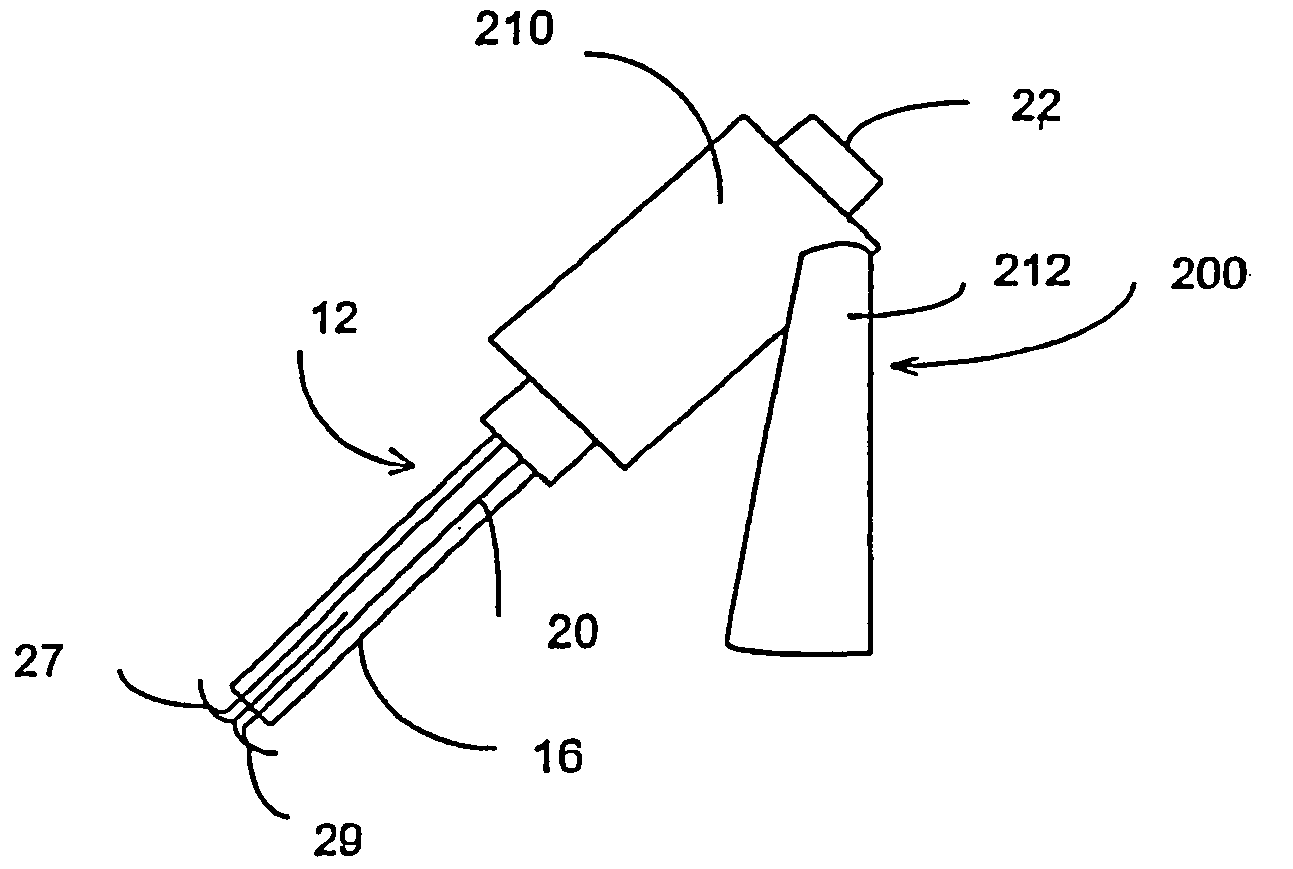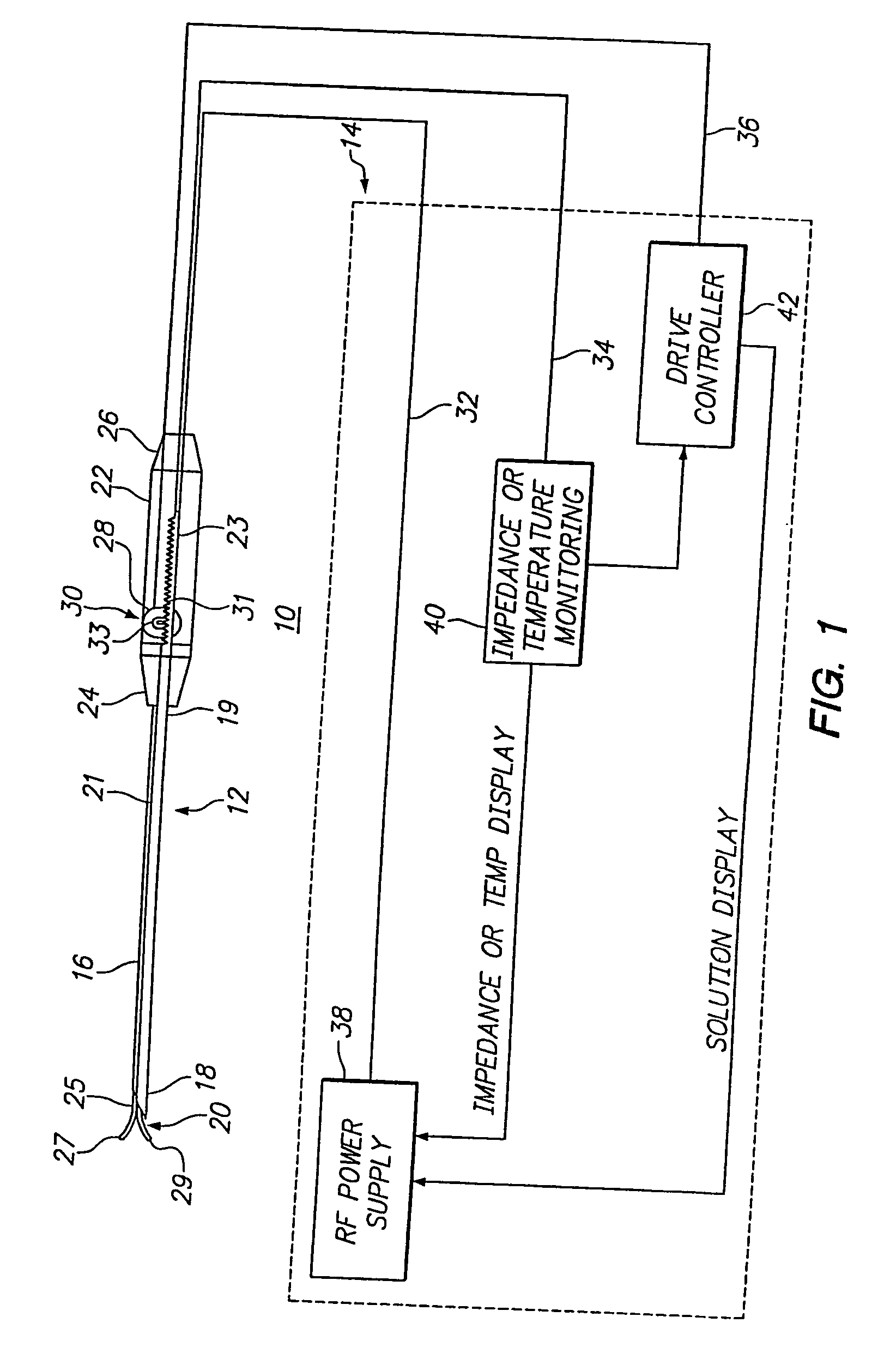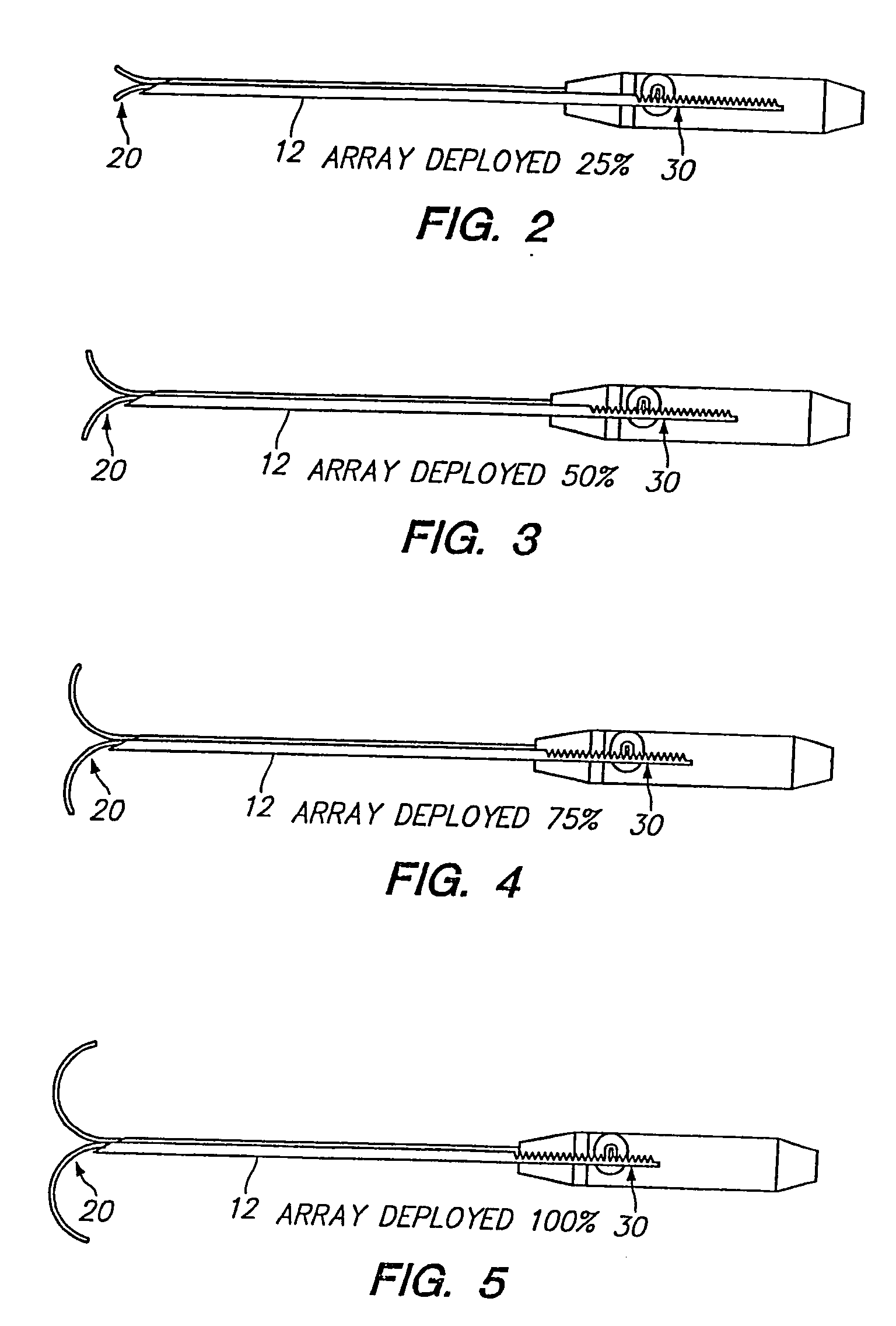Manually advanceable radio frequency array with tactile feel
a radio frequency array and tactile technology, applied in the field of tissue ablation systems, can solve the problems of manual procedures that are confusing, physicians may experience other difficulties, and many conventional systems experience difficulty in providing an adequate amount of current to cause tissue heating and coagulation, so as to facilitate automatic deployment and placement, eliminate any confusion, and precise ablation of body tissue
- Summary
- Abstract
- Description
- Claims
- Application Information
AI Technical Summary
Benefits of technology
Problems solved by technology
Method used
Image
Examples
Embodiment Construction
[0020] Referring in detail to the drawings, an illustrated embodiment of an improved RF ablation system of the present invention is shown. Turning to FIG. 1, the illustrated embodiment shows an overall view of a RF ablation system (10) of the present invention comprising a RF probe or catheter (12) connected to a control system (14). The RF catheter (12) preferably comprises an elongate tube (16) having distal and proximal ends (18) and (19) and a handle (22) having distal and proximal ends (24) and (26). The distal end (24) of the handle (22) is connected to the proximal end (19) of the tube (16). A passageway (not shown) extends through the tube (16) and handle (22). A needle array (20) having an elongate shaft (21) is preferably slidably received in the passageway with a proximal end (23) extending into the handle (22) and a distal end (25) extending to the distal end (18) of the tube (16) when in a retracted state and, as the illustrated embodiment shows, beyond the distal end (...
PUM
 Login to View More
Login to View More Abstract
Description
Claims
Application Information
 Login to View More
Login to View More - R&D
- Intellectual Property
- Life Sciences
- Materials
- Tech Scout
- Unparalleled Data Quality
- Higher Quality Content
- 60% Fewer Hallucinations
Browse by: Latest US Patents, China's latest patents, Technical Efficacy Thesaurus, Application Domain, Technology Topic, Popular Technical Reports.
© 2025 PatSnap. All rights reserved.Legal|Privacy policy|Modern Slavery Act Transparency Statement|Sitemap|About US| Contact US: help@patsnap.com



